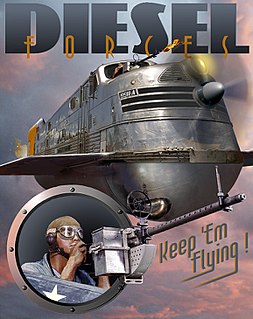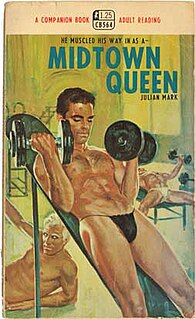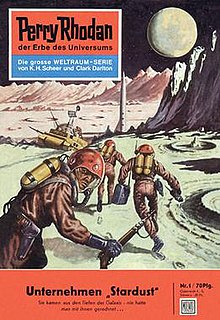 W
WPulp magazines were inexpensive fiction magazines that were published from 1896 to the late 1950s. The term "pulp" derives from the cheap wood pulp paper on which the magazines were printed. In contrast, magazines printed on higher-quality paper were called "glossies" or "slicks". The typical pulp magazine had 128 pages; it was 7 inches (18 cm) wide by 10 inches (25 cm) high, and 0.5 inches (1.3 cm) thick, with ragged, untrimmed edges.
 W
WAltus Press is a publisher of works primarily related to the pulp magazines from the 1910s to the 1950s.
 W
WA bondage cover, as opposed to a bondage magazine, was a general-interest magazine that featured bondage imagery on its cover, usually an image of a bound and gagged woman.
 W
WThe Cage is a pulp-era novel by British author Sydney Horler. It was published in 1953 by Harlequin Enterprises.
 W
WThe Chicago Ledger was a story paper published in Chicago, Illinois from 1872 until 1924. Put out by the Ledger Company and edited by Samuel H. Williams, the Ledger was a boilerplate literary magazine. Such periodicals were printed using engraved steel sheets. The plates, or casts of them, were then sent out to be printed and inserted into other newspapers. Ledger subscriptions originally sold for $1 for 52 issues and, by 1879, the paper had a circulation of 10,000. Although begun as a literary paper of "a good class," the Ledger eventually became more melodramatic in tone. In his 1910 book, Newspapers and Periodicals of Illinois, Franklin Scott, notes that "[t]he sensational, although not immoral, character of the Ledger stories, and the use that the large mail-order houses have made of its advertising columns, have given this paper an unusually long life and extensive circulation."
 W
WDieselpunk is a retrofuturistic subgenre of science fiction similar to steampunk or cyberpunk that combines the aesthetics of the diesel-based technology of the interwar period through to the 1950s with retro-futuristic technology and postmodern sensibilities. Coined in 2001 by game designer Lewis Pollak to describe his tabletop role-playing game Children of the Sun, the term has since been applied to a variety of visual art, music, motion pictures, fiction, and engineering.
 W
WThe dime novel is a form of late 19th-century and early 20th-century U.S. popular fiction issued in series of inexpensive paperbound editions. The term dime novel has been used as a catchall term for several different but related forms, referring to story papers, five- and ten-cent weeklies, "thick book" reprints, and sometimes early pulp magazines. The term was used as a title as late as 1940, in the short-lived pulp magazine Western Dime Novels. In the modern age, the term dime novel has been used to refer to quickly written, lurid potboilers, usually as a pejorative to describe a sensationalized but superficial literary work.
 W
WGay pulp fiction, or gay pulps, refers to printed works, primarily fiction, that include references to male homosexuality, specifically male gay sex, and that are cheaply produced, typically in paperback books made of wood pulp paper; lesbian pulp fiction is similar work about women. Michael Bronski, the editor of an anthology of gay pulp writing, notes in his introduction, "Gay pulp is not an exact term, and it is used somewhat loosely to refer to a variety of books that had very different origins and markets". People often use the term to refer to the "classic" gay pulps that were produced before about 1970, but it may also be used to refer to the gay erotica or pornography in paperback book or digest magazine form produced since that date.
 W
WThe Girls in 3-B is a classic work of lesbian pulp fiction by Valerie Taylor which was published in 1959 by Fawcett. Its happy ending for a lesbian character was unusual for the time period. It was one of the first three novels of any pulp fiction genre to be reprinted in 2003 by Feminist Press.
 W
WLesbian pulp fiction is a genre of lesbian literature that refers to any mid-20th century paperback novel or pulp magazine with overtly lesbian themes and content. Lesbian pulp fiction was published in the 1950s and 60s by many of the same paperback publishing houses as other genres of fiction including westerns, romances, and detective fiction. Because very little other literature was available for and about lesbians at this time, quite often these books were the only reference the public had for modeling what lesbians were. Stephanie Foote, from the University of Illinois commented on the importance of lesbian pulp novels to the lesbian identity prior to the rise of organized feminism: "Pulps have been understood as signs of a secret history of readers, and they have been valued because they have been read. The more they are read, the more they are valued, and the more they are read, the closer the relationship between the very act of circulation and reading and the construction of a lesbian community becomes...Characters use the reading of novels as a way to understand that they are not alone."
 W
WPenny dreadfuls were cheap popular serial literature produced during the nineteenth century in the United Kingdom. The pejorative term is roughly interchangeable with penny horrible, penny awful, and penny blood. The term typically referred to a story published in weekly parts of 8 to 16 pages, each costing one penny. The subject matter of these stories was typically sensational, focusing on the exploits of detectives, criminals, or supernatural entities. First published in the 1830s, penny dreadfuls featured characters such as Sweeney Todd, Dick Turpin, Varney the Vampire and Spring-heeled Jack.
 W
WPerry Rhodan is a long-running and popular West German/German space opera franchise, named after its hero. It commenced in 1961. Having sold approximately two billion copies worldwide,, it is the most successful science fiction book series ever written. The first billion of worldwide sales was celebrated in 1986. The series has spun off into comic books, audio dramas, video games and the like. A reboot, Perry Rhodan NEO, was launched in 2011 and began publication in English starting in April 2021.
 W
WStalag was a short-lived genre of Nazi exploitation Holocaust pornography in Israel that flourished in the 1950s and early 1960s, and stopped at the time of the Eichmann Trial, due to a ban by the Israeli government. These books were mainly about female German Nazi officers sexually abusing their male camp prisoners, yet they did not include any Jewish names to avoid taboos. They are no longer available in traditional publication format, but with the advent of the Internet they have been circulating via peer-to-peer file sharing.
 W
WWomen's Barracks: The Frank Autobiography of a French Girl Soldier is a classic work of lesbian pulp fiction by French writer Tereska Torrès published in 1950. Historians credit it as the first US paperback-original bestseller, as the first lesbian pulp fiction book published in America, and as "the pioneer of lesbian fiction". As the first of its genre, it received heavy backlash, and it was banned in Canada. Its popularity prompted the formation of the House Select Committee on Current Pornographic Materials in the United States. Its original cover art is considered a classic image of lesbian fiction.
 W
WA yellow-back or yellowback is a cheap novel which was published in Britain in the second half of the 19th century. They were occasionally called "mustard-plaster" novels.